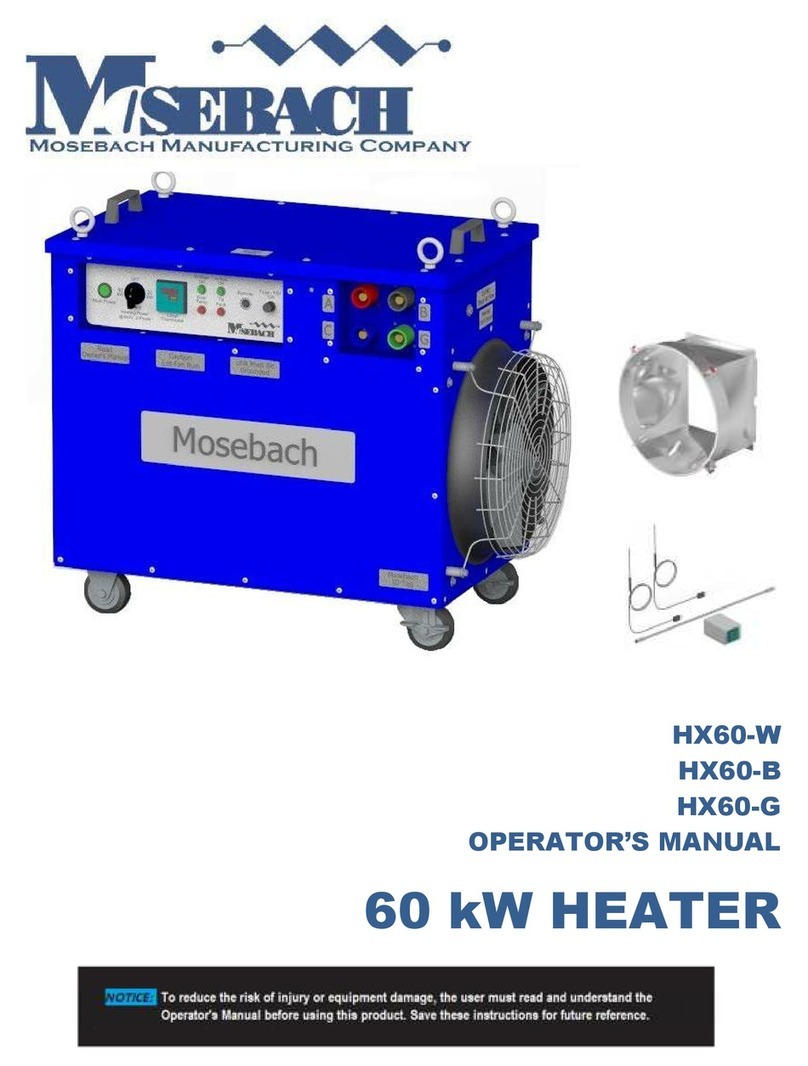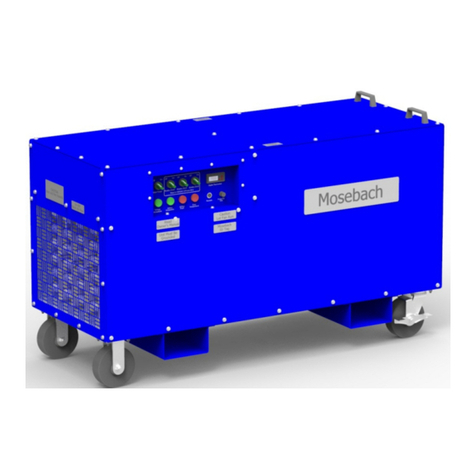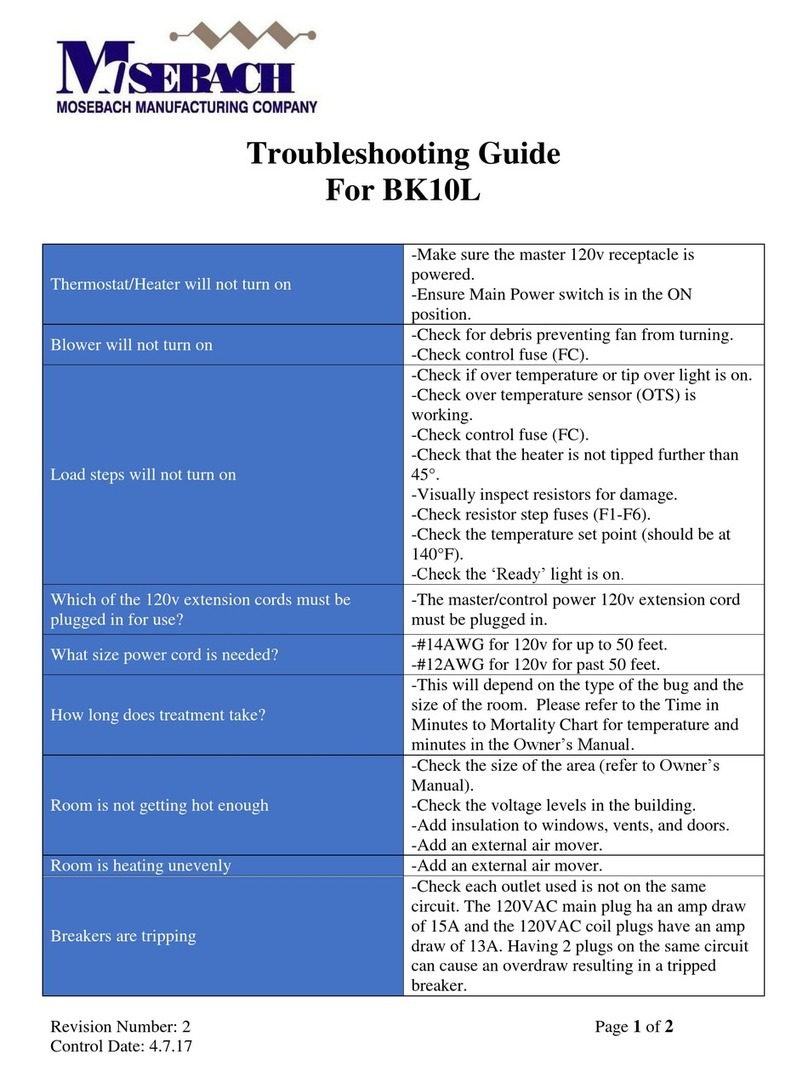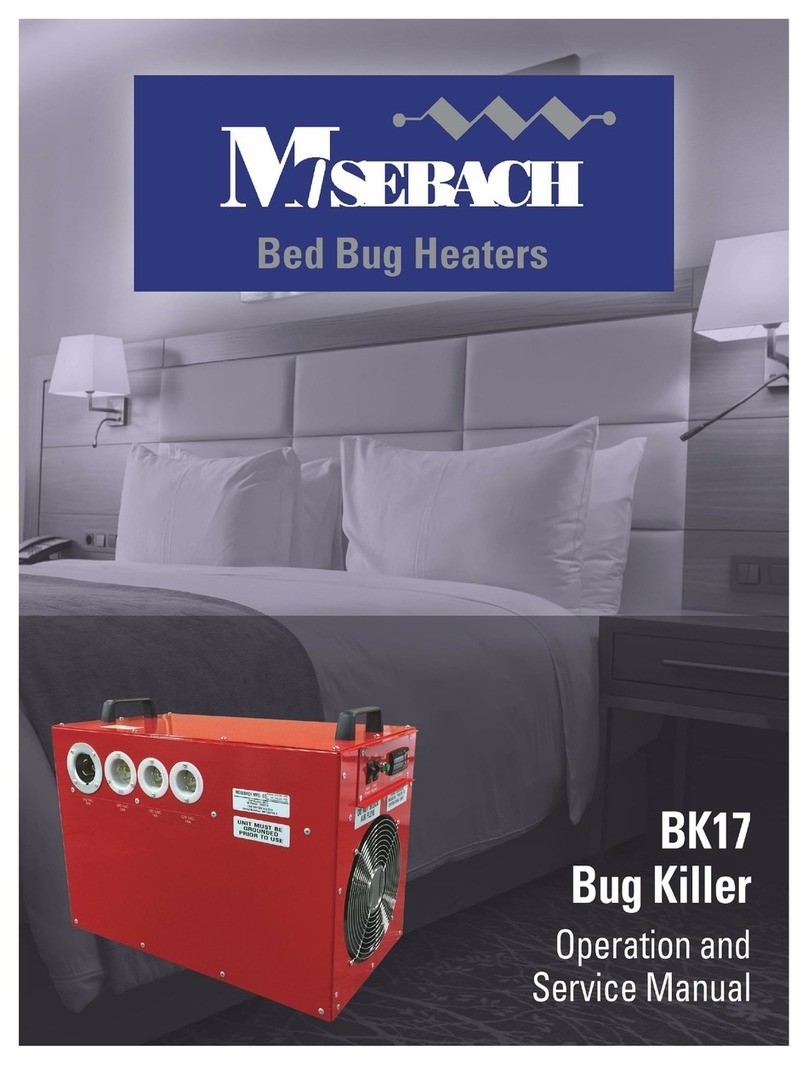
Bug Killers
6
) Safety
This bug killer is designed for a variety of loads. Because of this, it is possible that voltages higher
that those applied can be present inside the bug killer and at external connections of the bug
killer. Work on the bug killer’s internal systems should only be attempted by highly trained
technicians and only when power has been disconnected and cannot be reconnected to the unit.
IMPORTANT INSTRUCTIONS
When using electrical appliances, basic precautions should always be followed to reduce the risk
of fire, electrical shock, and injury to persons, including the following:
1) Read all instructions before using this bug killer.
2) This bug killer is hot when in use. To avoid burns, do not let bare skin touch hot
surfaces. Use handles when moving this bug killer. Keep combustible materials, such
as furniture, pillows, bedding, papers, clothes, and curtains at least 6 feet
(1.8 meters) from the exhaust of the bug killer and keep them away from the sides
and rear.
3) Extreme caution is necessary when any bug killer is used by or near children or
invalids and whenever the bug killer is left operating and unattended.
) Remove all animals and plants from area to be heated
5) Always unplug bug killer when not in use.
6) Do not operate any bug killer with a damaged cord or plug or after the bug killer
malfunctions or has been dropped or damaged in any manner. Discard bug killer or
return to authorized service facility for examination and/or repair.
7) Do not use outdoors.
8) Do not use in wet or moist locations
9) This bug killer is not intended for use in wet indoor environments.
10) Do not run cords under carpeting. Do not cover cords with throw rugs, runners, or
similar coverings. Do not route cords under furniture or appliances. Arrange cords
away from traffic areas and where it will not be tripped over.
11) To disconnect bug killer, turn controls off, then remove plugs from outlets.
12) Do not insert or allow foreign objects to enter any ventilation or exhaust opening as
this may cause an electric shock or fire, or damage the bug killer.
13) To prevent a possible fire, do not block air intakes or exhaust in any manner. Do not
use on soft surfaces, like a bed, where openings may become blocked.
1 ) A bug killer has hot and arcing or sparking parts inside. Do not use it in areas where
gasoline, paint, or flammable liquids are used or stored.
15) Use this bug killer only as described in this manual. Any other use not recommended
by the manufacturer may cause fire, electric shock, or injury to persons.
































